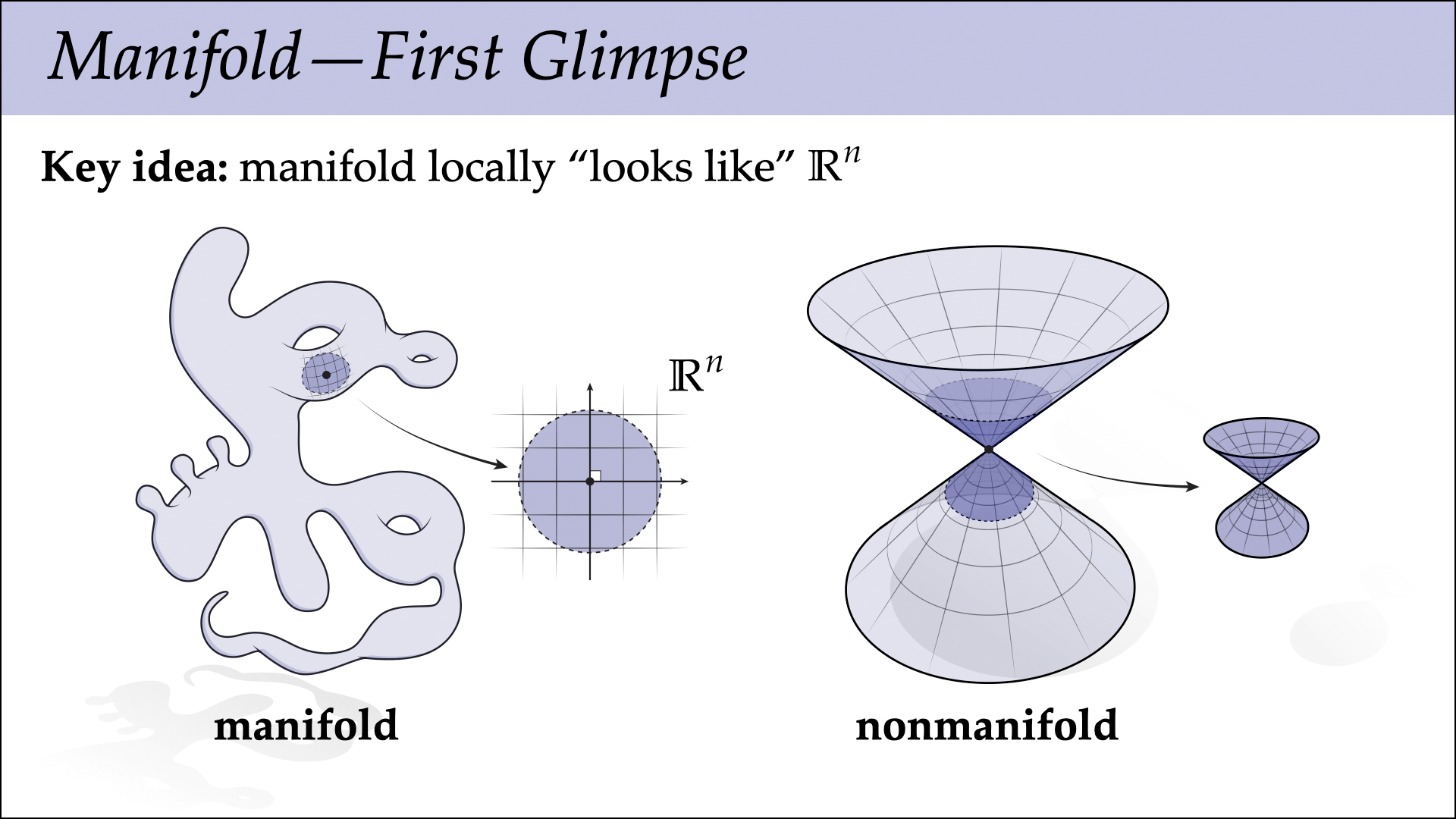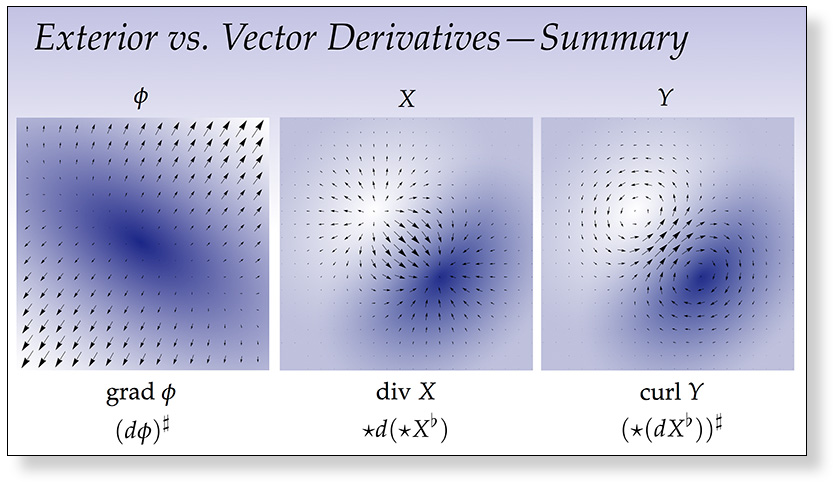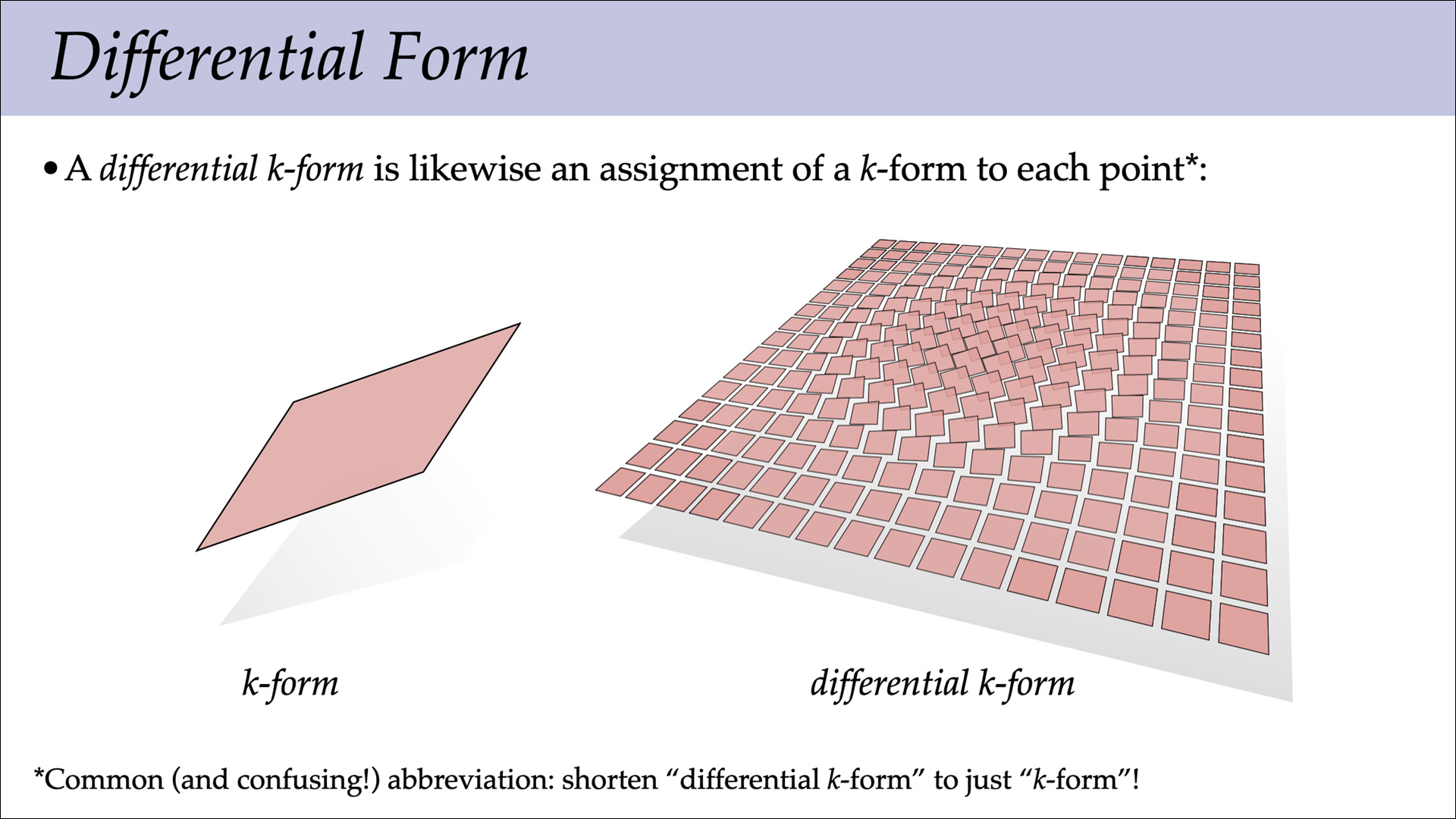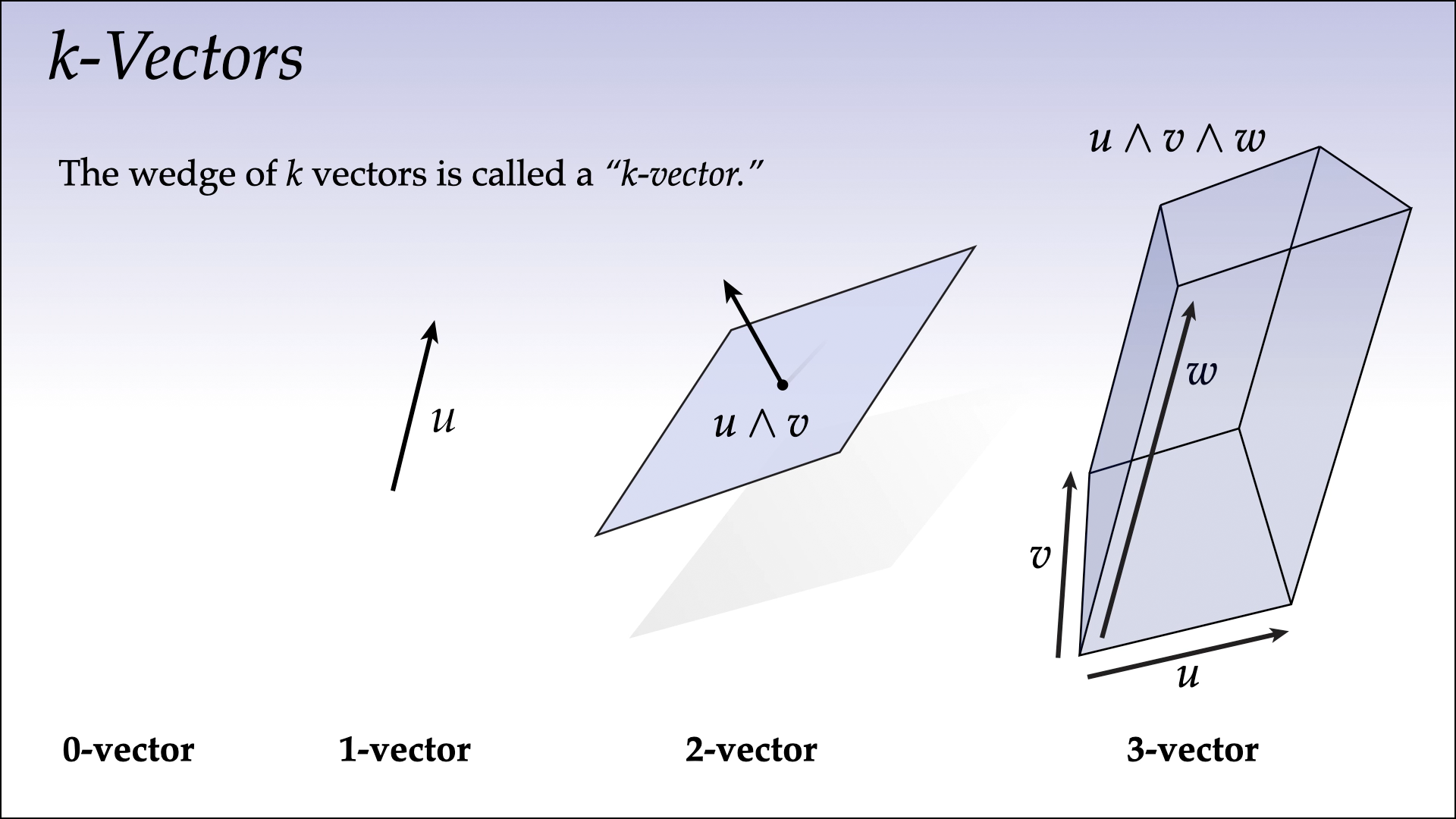After spending a great deal of time understanding some basic algebraic and analytic tools (exterior algebra and exterior calculus), we’ll finally start talking about geometry in earnest, starting with smooth plane and space curves. Even low-dimensional geometry like curves reveal a lot of the phenomena that arise when studying curved manifolds in general. Our main result for this lecture is the fundamental theorem of space curves, which reveals that (loosely speaking) a curve is entirely determined by its curvatures. Descriptions of geometry in terms of “auxiliary” quantities such as curvature play an important role in computation, since different algorithms may be easier or harder to formulate depending on the quantities or variables used to represent the geometry. Next lecture, for instance, we’ll see some examples of algorithms for curvature flow, which naturally play well with representations based on curvature!
Category: Lectures
Supplemental: Vector-Valued Differential Forms
This short-but-important supplemental lecture introduces some language we’ll need for describing geometry (curves, surfaces, etc.) in terms of differential forms. So far, we’ve said that a differential \(k\)-form produces a scalar measurement. But when talking about geometry, we often care about quantities that are vector-valued rather than scalar-valued. For instance, positions in \(\mathbb{R}^n\), tangents, and normals are all vector-valued quantities. For the most part, all of our operations look pretty much the same as before. The one exception is the wedge product, which in \(\mathbb{R}^3\) we now define in terms of the cross product.
Lecture 8: Discrete Differential Forms
In this lecture, we turn smooth differential \(k\)-forms into discrete objects that we can actually compute with. The basic idea is actually quite simple: to capture some information about a differential \(k\)-form, we integrate it over each oriented \(k\)-simplex of a mesh. The resulting values are just ordinary numbers that give us some sense of what the original \(k\)-form must have looked like.
Lecture 6: Exterior Derivative
Ordinary calculus provides tools for understanding rates of change (via derivatives), total quantities (via integration), and the total change (via the fundamental theorem of calculus). Exterior calculus generalizes these ideas to \(n\)-dimensional quantities that arise throughout geometry and physics. Our first lecture on exterior calculus studies the exterior derivative, which describes the rate of change of a differential form, and (together with the Hodge star) generalizes the gradient, divergence, and curl operators from standard vector calculus.
Lecture 5: Differential Forms
Lecture 4: \(k\)-Forms
Today we continue our journey toward building up (discrete) exterior calculus by talking about how to measure little k-dimensional volumes. Just like rulers measure length, and cups measure volume, k-forms will be used to take measurements of the little k-dimensional volumes or k-vectors that we built up using exterior algebra in our previous lecture. Such measurements will ultimately allow us to talk about integration over curved spaces; in the discrete setting, these measurements will be the basic data we associate with the elements of mesh.
Lecture 3: Exterior Algebra
Our next lecture will cover one of the basic tools we’ll use throughout the rest of the course: exterior algebra. The basic idea is to add a couple new operations to our usual list of vector operations (dot product, cross product, etc.) that make it easy to talk about volumes rather than just vectors. If you felt ok working with things like the cross product and the determinant in your linear algebra/vector calculus courses, this shouldn’t be too big of a leap. (If not, could be a good moment for a review!)
Lecture 2B: Introduction to Manifolds

In tomorrow’s lecture we will catch a first glimpse of the idea of manifolds, which are pretty central to differential geometry. Rather than giving a formal definition in the smooth case, we’ll introduce a notion of discrete manifolds that capture the most important ideas. These discrete manifolds build on the idea of a simplicial complex, introduced in the previous lecture.
Lecture 2A: What is a “Mesh”?
Lecture 1: Overview
Our first lecture provides motivation for the topics we’ll cover in the course, and takes a deep dive into one specific example (curvature of curves in the plane) to highlight some of the basic principles of discrete differential geometry. This example moves pretty fast and uses some ideas that we’ll study at a slower, more careful pace later on. For now, don’t worry too much about the details—the goal here is to just get a sense of what the course is all about!






